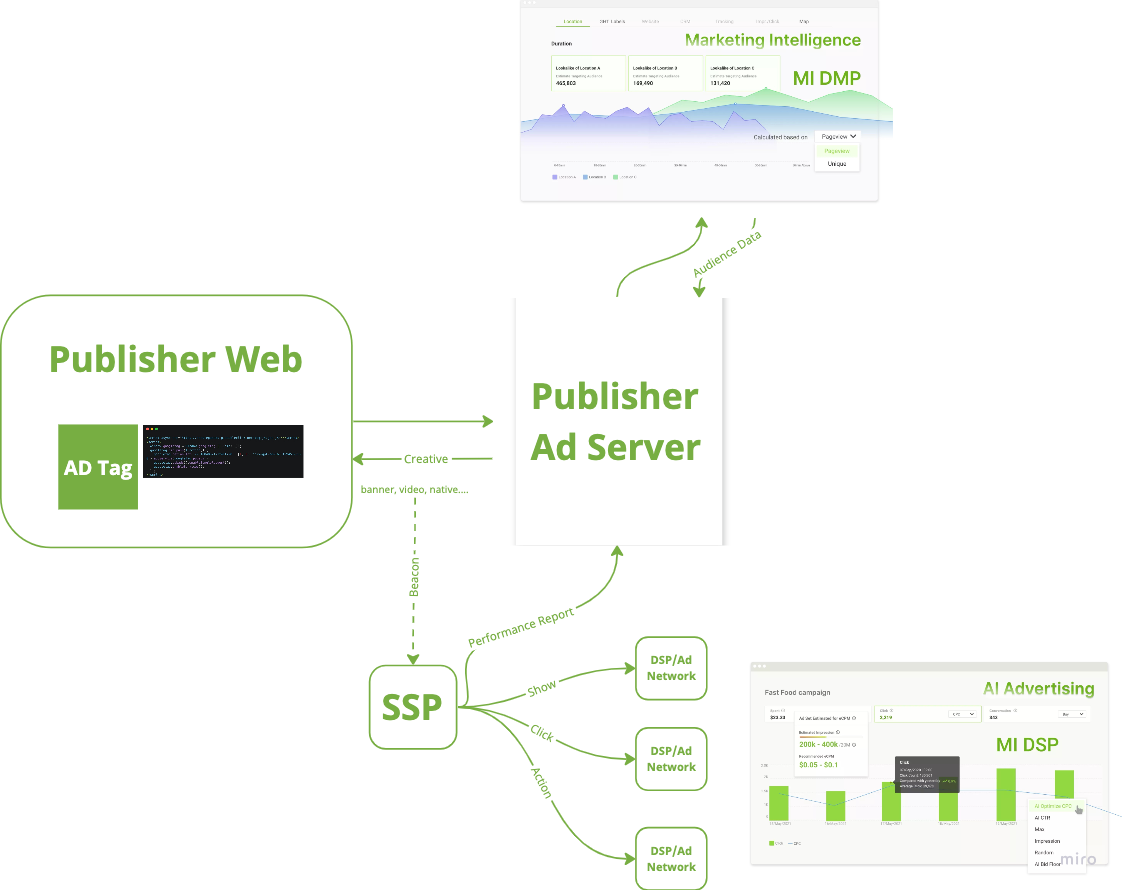Programmatic Advertising Transaction Process
In our previous publication, we provided an overview of the supply chain within the digital advertising ecosystem. In continuation, this article aims to deepen your understanding by presenting additional background knowledge and relevant terminology. Before delving into the specifics, we will first explore the evolution of media buying, tracing its path from traditional direct-sold ads to the present digital advertising landscape.
One of the significant advantages of programmatic advertising lies in its automated transaction process, which streamlines deal-making and facilitates performance tracking for both advertisers and publishers. Programmatic advertising is characterized by real-time bidding and dynamic eCPM (effective cost per mille), features that effectively reduce the need for manual interventions. Let us now examine the comprehensive transaction process in detail:

- When a user browses the web, the Ad Tag, represented by JavaScript code, is activated on the Publisher’s website.
- This Ad Tag has the capability to access audience data from the Data Management Platform (DMP) and subsequently relay this information to the Ad Server to retrieve suitable creatives.
- Following the process, the creative content is rendered and displayed on the website for the user to view.
- Meanwhile, beacons, which are performance-measuring tools, are transmitted to their respective ad networks.
- Subsequently, the Supply-Side Platform (SSP) evaluates the performance based on the received beacons, while the Demand-Side Platform (DSP) and ad networks continue to dynamically adjust their bidding behavior in response to the performance data.
Terminology
Campaign Objectives
The paramount advantage of real-time bidding resides in its capacity to empower advertisers with judicious budget allocation and dynamic bid request adjustments. Leveraging cutting-edge AI technologies, including machine learning algorithms and deep learning algorithms, enhances the feasibility of ad selection. In conceptualizing the bidder as a server-side programming entity, it is essential to recognize that the actual bidding logic may exhibit slight variations contingent on the specific design employed by each provider.
As a consequence, bidder types may differ based on the pursued objective, typically encompassing the following categories:
